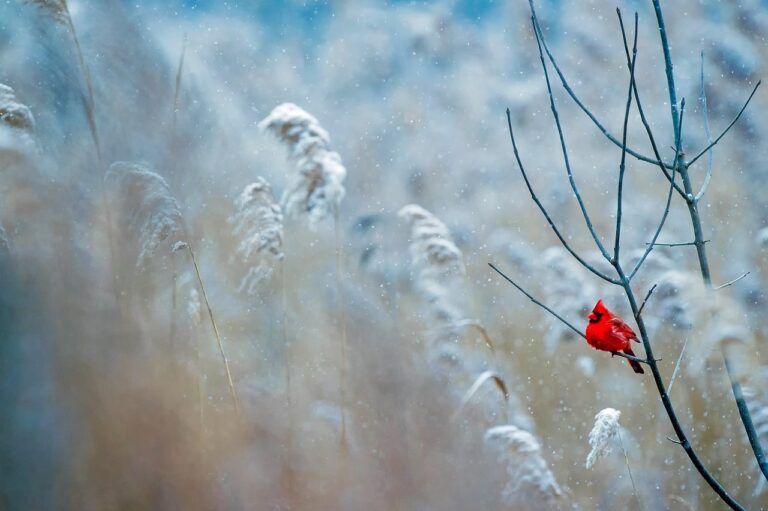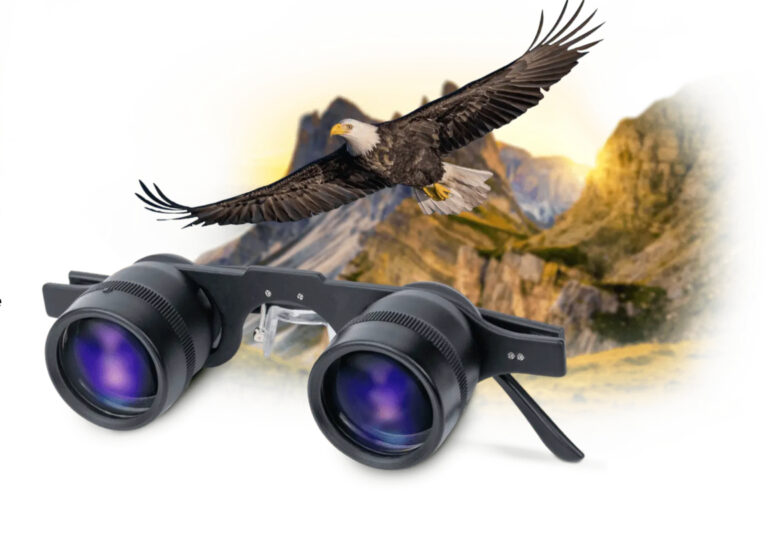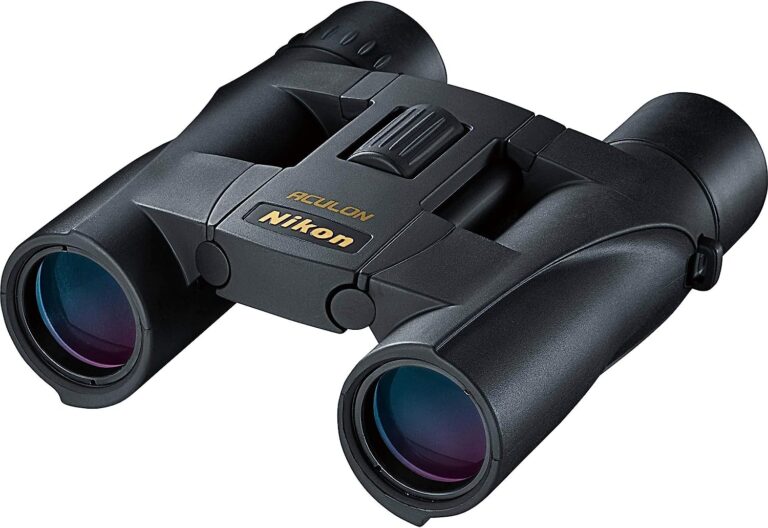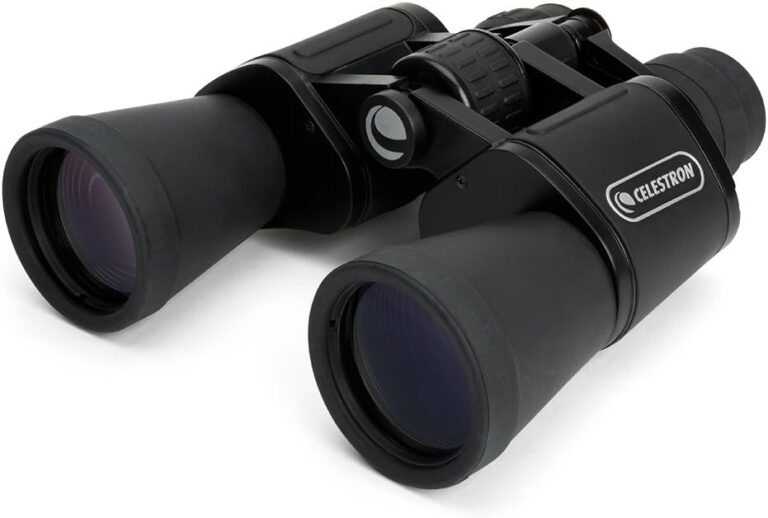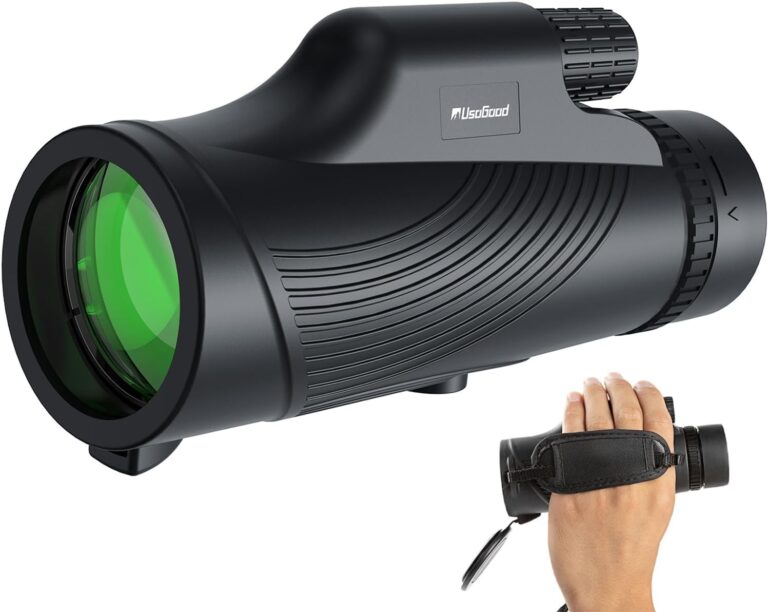Bird watching is a fascinating hobby that allows you to connect with nature and explore the colorful world of birds. If you’ve been itching to embark on a bird-watching adventure in the USA, you’ve come to the right place! In this ultimate guide, we’ll unveil the best time to witness the awe-inspiring bird species that grace the skies of the USA. Equipped with your trusty binoculars, get ready to discover the prime seasons and regions to catch a glimpse of these feathered wonders. So, lace up your boots, grab your binoculars, and let’s uncover the best time for bird watching in the USA!

Choosing the Best Time for Bird Watching in the USA
If you’re an avid bird watcher or looking to start a new hobby, the United States offers a diverse range of birding opportunities throughout the year. To make the most out of your birdwatching adventures, it’s essential to choose the best time to observe these majestic creatures in their natural habitats. By considering different seasons, understanding migratory patterns, and researching local birding hotspots, you can enhance your bird watching experience and increase your chances of encountering a wide variety of species.
Considering the Different Seasons
Each season brings unique bird watching opportunities, as different species thrive during specific times of the year. Spring and fall are particularly exciting seasons for bird watchers, as many birds migrate during these periods. Springtime brings the return of migratory birds from their wintering grounds, adding a burst of color and song to the surroundings. In contrast, fall offers an exceptional chance to observe birds as they prepare for their journey to warmer climates. By exploring both seasons, you can witness the ebb and flow of migratory patterns and enjoy a diverse mix of bird species.
Understanding the Migratory Patterns
Migratory patterns play a vital role in determining the best time for bird watching in the USA. Birds embark on long flights, traveling thousands of miles to find suitable breeding grounds or escape harsh winters. By familiarizing yourself with these patterns, you can anticipate the arrival and departure of various bird species. Migration typically occurs during spring and fall, but the timing can vary depending on the region and the specific bird species. Researching migration routes and consulting migration maps can provide valuable insights into when and where to expect certain birds in your area.
Researching Local Birding Hotspots
To optimize your bird watching experience, it’s essential to research and identify local birding hotspots. Birds are highly adaptive creatures, and certain areas offer ideal habitats for both resident and migratory species. National parks, wildlife refuges, and nature preserves are often excellent places to start your birding adventure. These protected areas provide a sanctuary for birds and offer habitats rich in food and nesting sites. Local birdwatching clubs, online forums, and guidebooks can provide valuable information about the best locations to observe specific bird species and enhance your chances of successful sightings.
Understanding Bird Behavior and Activity Patterns
To become an expert bird watcher, it’s crucial to understand bird behavior and activity patterns. By learning about diurnal versus nocturnal birds, recognizing peak activity times, and identifying optimal weather conditions, you can position yourself for exceptional bird watching encounters.
Learning About Diurnal vs. Nocturnal Birds
Diurnal birds are active during daylight hours, making them easier to observe and study. They typically engage in behaviors such as feeding, singing, and socializing during the day. Nocturnal birds, on the other hand, are most active at night, making them a unique challenge to spot and study. Owls and nightjars are prime examples of nocturnal birds. Familiarizing yourself with the behavior and characteristics of both diurnal and nocturnal birds will enable you to plan your bird watching excursions accordingly and increase your chances of spotting different species.
Recognizing Peak Activity Times
Birds, like humans, have specific peak activity times throughout the day. These periods are when they engage in essential activities such as foraging, courting, and territorial displays. Early mornings and late afternoons are generally the most active times for birds, as they take advantage of cooler temperatures and abundant food sources. By setting your alarm clock and heading out at dawn, you’ll be rewarded with an orchestra of birdsong and witness their vibrant morning rituals. Similarly, the late afternoon offers ample opportunities to observe birds engaged in feeding frenzies or displaying intricate courtship behaviors. Being aware of these peak activity times will significantly enhance your birdwatching experience and increase your chances of successful sightings.
Identifying Optimal Weather Conditions
Weather conditions can greatly impact bird behavior and habitat preferences. Sunny, pleasant days often result in increased bird activity as they take advantage of optimal foraging conditions. In contrast, harsh weather, such as heavy rains or extreme temperatures, may force birds to seek shelter, limiting their visibility. By monitoring weather forecasts and choosing days with mild temperatures, gentle breezes, and clear skies, you can optimize your chances of successful bird watching. Calm weather conditions also allow for better visibility, making it easier to spot birds in flight or hidden among the foliage.
Exploring the Advantages of Early Morning Bird Watching
While bird watching can be enjoyable at any time of the day, there are distinct advantages to venturing out in the early morning. By taking advantage of calm and quiet surroundings, observing birds during their most active time, and spotting rare species and elusive birds, you can truly embrace the magic of early morning bird watching.
Taking Advantage of Calm and Quiet Surroundings
Early mornings offer a serene atmosphere, away from the hustle and bustle of daily life. By starting your bird watching excursion before sunrise, you’ll likely encounter a tranquil environment with minimal human activity. This calmness reduces the chances of scaring away birds and provides a nurturing environment for observing their natural behaviors. Additionally, the absence of wind during the early hours allows for better hearing, increasing your ability to detect subtle bird calls and songs.

Observing Birds During Their Most Active Time
Birds are typically at their most active early in the morning. As the day begins, they engage in vital activities such as foraging, finding mates, and defending territories. By watching birds during their peak activity times, you’ll have the opportunity to witness a variety of behaviors, from feeding frenzies to elaborate courtship displays. The vibrant energy and bustling movements of birds during their active time can provide a mesmerizing experience for bird watchers.
Spotting Rare Species and Elusive Birds
Many rare species and elusive birds are more easily spotted during early mornings. As humans begin to populate the outdoors later in the day, these birds retreat to quieter areas or seek shelter and become harder to detect. By being an early bird yourself, you increase your chances of encountering these elusive species and capturing rare sightings. Whether it’s a rare warbler passing through during migration or a shy woodpecker exploring its territory, early morning bird watching offers the best opportunity to spot these gems of the avian world.
Embracing the Magic of Dusk and Dawn
The magical moments of dusk and dawn present unique opportunities for bird watchers. These times of transition between day and night offer unparalleled experiences such as experiencing chorus singing at dawn, witnessing birds engage in courtship displays, and taking advantage of optimal lighting for photography.
Experiencing Chorus Singing at Dawn
As the sun begins to rise, birds engage in what is known as chorus singing. This enchanting event occurs during the early hours of dawn when male birds create a symphony of melodies to attract mates and establish territories. The sheer volume and diversity of bird songs during this time create a breathtaking experience for bird watchers. From melodious warblers to majestic thrushes, the chorus singing at dawn is an auditory feast you won’t want to miss.
Witnessing Birds Engage in Courtship Displays
Courtship displays are elaborate behaviors undertaken by birds to attract a mate. These displays often involve intricate dances, impressive aerial acrobatics, and vibrant plumage displays. Dusk and dawn are prime times to witness these captivating courtship rituals. As birds prepare for the day or settle in for the night, they engage in these captivating displays to communicate their suitability as potential mates. Observing these courtship behaviors not only offers a glimpse into the intricate lives of birds but also provides excellent opportunities for photography and documenting these remarkable displays.
Taking Advantage of Optimal Lighting for Photography
Photography enthusiasts know that lighting is crucial for capturing stunning images. The soft, warm hues of sunrise and sunset provide an ideal backdrop for bird photography. During these magical moments, the lighting is more diffused, reducing harsh shadows and enhancing the colors and details of birds. The combination of dynamic skies, richly colored plumage, and optimal lighting conditions makes dusk and dawn the preferred time for many photographers. By aligning your bird watching adventures with these golden hours, you can capture breathtaking images and create lasting memories.
Unveiling the Secrets of Nighttime Bird Watching
While bird watching is often associated with daytime activities, the nighttime offers a whole new world of avian wonders. By exploring the nocturnal habitats of birds, using specialized equipment for better observation, and enjoying unique bird species active only at night, you can unveil the secrets of nighttime bird watching.
Exploring the Nocturnal Habitats of Birds
Nocturnal birds have evolved to adapt to the darkness and inhabit unique habitats distinct from their diurnal counterparts. From owls silently perched in the forest to nightjars skillfully camouflaged in the undergrowth, exploring these nocturnal habitats can reveal hidden treasures. Wetlands, dense forests, and open grasslands are common nocturnal bird habitats where you can search for these elusive creatures. Venturing out at night with caution and respect for their environment can reward you with encounters of owls, night herons, and other fascinating nocturnal species.
Using Specialized Equipment for Better Observation
As night falls, the natural visibility decreases, making bird watching more challenging. To fully immerse yourself in the world of nighttime bird watching, specialized equipment can greatly enhance your experience. Night vision binoculars or monoculars equipped with infrared technology allow you to see in low light conditions, revealing the secrets of nocturnal bird behavior without disturbing their natural habitat. Spotting scopes with high magnification can also be used to observe birds from a distance, minimizing disturbance and maximizing your chances of successful sightings.
Enjoying Unique Bird Species Active Only at Night
Nighttime bird watching opens the door to a whole host of unique bird species that remain unseen during the day. These nocturnal creatures have adapted to thrive in the darkness and have evolved specialized attributes to navigate and hunt at night. From the eerie calls of the Eastern Screech-Owl to the elusive flights of nighthawks, encountering these exclusive species can be a thrilling experience for bird watchers. By immersing yourself in the nighttime environment and patiently observing their activities, you can gain a deep appreciation for the diversity of birds and their remarkable adaptations.
Leveraging Different Seasons for Bird Watching
Every season offers distinct bird watching opportunities, allowing you to witness different aspects of avian life throughout the year. By leveraging the characteristics of each season, you can target specific bird behaviors, such as spotting migratory birds during spring and fall, observing nesting behaviors and hatchlings in summer, and finding wintering birds in southern states.
Spotting Migratory Birds During Spring and Fall
Spring and fall are seasons of immense bird movement as millions of birds embark on their long-distance migrations. During the spring, birds return from their wintering grounds, often in vibrant plumage, and fill the air with their songs. This time presents a fantastic opportunity to spot rare and colorful migratory species passing through various regions of the USA. Similarly, in the fall, birds prepare for migration, fueling up on food before undertaking their arduous journeys. By positioning yourself along well-known migratory routes or strategic stopover sites during these seasons, you maximize your chances of encountering a diverse array of species.
Observing Nesting Behaviors and Hatchlings in Summer
Summer is a time of new life and growth in the avian world. Many birds take advantage of abundant food sources and favorable weather conditions to build nests, lay eggs, and raise their young. By observing nesting behaviors and hatchlings during the summer, bird watchers can witness intimate moments of parental care and the excitement of birds fledging. Wetlands, woodlands, and grasslands are particularly fruitful habitats during this season, offering ample opportunities to observe and document these awe-inspiring life cycles.
Finding Wintering Birds in Southern States
During the winter months, many bird species escape frigid temperatures by migrating to warmer southern states. Florida, Texas, and coastal regions along the Gulf of Mexico become havens for wintering birds seeking food and shelter. The diversity of bird species in these areas during winter is remarkable, with migratory waterfowl, shorebirds, and raptors making appearances. By exploring the southern states during this season, you can witness the convergence of resident species with these winter visitors, creating a vibrant mix of avian life.
Unraveling the Best Birding Months Across the USA
Each month offers unique bird watching opportunities across the USA. Understanding the best birding months in different regions can help you plan your bird watching adventures for optimal experiences. Let’s take a closer look at the months from January to December.
January and February
January and February mark the beginning of the year, and although cold in many places, they bring exciting bird watching opportunities. Along the coasts, it’s possible to spot wintering waterfowl species such as ducks, geese, and swans. In the southern regions, residents and winter visitors such as herons, egrets, and warblers can be observed. Keep an eye out for raptors soaring overhead and seed-eating birds visiting backyard feeders.
March and April
As winter transitions into spring, the bird world comes alive with activity. March and April are prime months for witnessing migratory waves as birds return from their wintering grounds. Birders can witness the arrival of brightly colored warblers, thrushes, and tanagers, among other species. In the wetlands, marshes, and forests, the air fills with the melodies of returning songbirds as they establish territories and find mates.
May and June
May and June represent the peak of spring birding across the USA. Migratory birds are in full swing, and nesting behaviors are in full swing. Breeding plumages are on full display, making this period ideal for bird photography. Woodpeckers, flycatchers, and vireos can be seen foraging for insects, while avid bird watchers eagerly look out for elusive species such as hummingbirds and cuckoos.
July and August
July and August bring about high summer, and bird activity may slow down in some regions. However, birders can still witness nesting behaviors, monitor fledging activity, and enjoy observing parental care. Wetlands and coastlines provide opportunities to spot herons, waders, and shorebirds, while grasslands may be home to prairie species like sparrows and meadowlarks. Seabird colonies become a flurry of activity as young birds fledge and beat their wings for the first time.
September and October
September and October mark the onset of fall and another wave of bird migration. This period presents a unique opportunity to spot birds on their journey southward, particularly in coastal areas along flyways. Shorebirds, raptors, and warblers are common sights during this season. Additionally, bird watchers may also witness the arrival of waterfowl and shorebirds that spend their winter in the USA.
November and December
The final months of the year bring cooler temperatures and a shift in bird populations across the country. November and December offer excellent opportunities to spot wintering birds that seek refuge in warmer southern states. Coastal areas and wetlands become important stopping points for migratory waterfowl, while woodlands may host species such as owls and woodpeckers. Backyard bird feeders become popular gathering places for a variety of bird species, adding joy to the holiday season.
Discovering Top-Rated Bird Watching Destinations
The United States is home to numerous top-rated bird watching destinations, each offering unique habitats and remarkable bird species. Let’s explore some of the most renowned birding hotspots across the country.
Eastern Seaboard: Cape May, New Jersey
Cape May, New Jersey, is a hotbed of avian activity and a mecca for bird watchers along the eastern seaboard. This coastal destination acts as a critical stopover for migratory birds, attracting an impressive number of species during spring and fall. Bird watchers can observe hawks and falcons during the fall hawk migration, enjoy the spectacle of songbirds in the spring, and witness shorebirds all year round. The Cape May Bird Observatory provides resources, guided tours, and educational programs for birders of all skill levels.
Western Mountains: Malheur National Forest, Oregon
The Malheur National Forest in eastern Oregon offers an exceptional birding experience in a breathtaking mountain environment. This diverse habitat is home to a wide array of bird species, including raptors such as eagles and hawks, grouse, owls, and woodpeckers. The forest’s wetlands and waterways attract waterfowl, herons, and sandhill cranes, adding to the diversity of bird life. Bird watchers can explore numerous trails, observation points, and designated birding areas, all while enjoying the stunning mountain vistas.
Southern Swamplands: Everglades National Park, Florida
Everglades National Park in Florida is world-renowned for its vast wetlands and rich bird diversity. This unique ecosystem supports an incredible variety of bird species, including the iconic Roseate Spoonbill, herons, egrets, ibises, and numerous waterfowl. Birders can explore a network of trails, boardwalks, and observation towers to observe these incredible creatures in their natural habitat. The park offers ranger-led bird walks and educational programs to help visitors fully appreciate the avian wonders of the Everglades.
Great Plains: Bosque del Apache National Wildlife Refuge, New Mexico
Bosque del Apache National Wildlife Refuge in New Mexico is a hidden gem for bird watchers seeking the avian marvels of the Great Plains. The refuge provides a critical wintering habitat for thousands of migrating waterfowl, including Sandhill Cranes, Snow Geese, and various species of ducks. Bird watchers can witness the dramatic morning fly-outs and evening fly-ins of these birds, as they congregate in massive flocks for feeding and roosting. The presence of raptors such as Bald Eagles and Peregrine Falcons adds another layer of excitement to the birding experience.
Pacific Coast: Point Reyes National Seashore, California
Point Reyes National Seashore, located along the stunning Pacific Coast of California, is a haven for coastal bird species and marine wildlife. The park’s diverse habitats, including sandy beaches, estuaries, and coastal cliffs, attract a plethora of bird species. Visitors can expect to see pelicans, cormorants, shorebirds, and seabirds such as Puffins and Albatrosses. The park also hosts regular bird walks and offers interpretive programs to enhance visitor understanding and appreciation of the coastal ecosystem.
Considering Weather Factors and Regional Variations
Weather factors and regional variations play a significant role in bird behavior and distribution. By understanding the impacts of temperature and rainfall on bird activity, considering the effects of weather extremes on sightings, and recognizing regional differences in bird populations, you can tailor your bird watching experiences accordingly.
Effect of Temperature and Rainfall on Bird Activity
Temperature and rainfall influence bird activity and behavior in various ways. During hot summer days, some bird species may become less active, seeking shade and reducing their foraging activities. However, during cooler temperatures, birds may increase their movements and vocalizations as they take advantage of more favorable conditions. Rainfall can also significantly impact bird behavior, with some species displaying reduced activity during heavy downpours. On the other hand, rainstorms can create ideal conditions for bird sightings, as birds may flock to areas with increased insect activity or temporarily take shelter in more exposed locations.
Impacts of Weather Extremes on Sightings
Extreme weather events such as storms, heatwaves, or severe cold fronts can disrupt bird populations and affect their visibility. Severe storms and hurricanes can result in altered migration patterns or cause birds to seek shelter in unfamiliar locations, making them less visible to bird watchers. Similarly, record-breaking heatwaves may force birds to reduce their activity or seek shade, impacting their availability for observations. Cold snaps and snowstorms during winter may also influence bird distribution, with some birds moving to more sheltered areas or seeking out backyard feeders for food. By monitoring weather patterns and adjusting your bird watching plans accordingly, you can better navigate these weather extremes and still enjoy fruitful bird watching experiences.
Regional Differences in Bird Populations
The United States is vast and geographically diverse, leading to significant regional differences in bird populations. Coastal regions may have a rich abundance of shorebirds and seabirds, while mountains provide habitats for raptors and forest-dwelling species. Wetlands and marshes are diverse ecosystems teeming with waterfowl, herons, and wetland songbirds. By considering these regional differences, you can plan your bird watching trips to target specific bird species or ecosystems that interest you the most. Local field guides, online resources, and regional birding clubs can provide invaluable insights into the bird populations specific to your desired locations.
Tips and Techniques for Successful Bird Watching
Bird watching is a rewarding hobby that requires patience, skill, and a love for the natural world. To enhance your chances of successful bird watching and fully immerse yourself in this captivating activity, consider the following tips and techniques:
Investing in High-Quality Binoculars and Spotting Scopes
Binoculars and spotting scopes are essential tools for every bird watcher. Investing in high-quality optics can make a significant difference in your ability to observe and identify birds, particularly distant or elusive species. Look for binoculars with appropriate magnification, preferably between 8x and 10x, and a wide field of view for easier scanning. Spotting scopes with higher magnification can provide more detailed views of birds in open habitats or distant perches. Ensure your chosen optics are lightweight, comfortable to use, and offer good clarity and color fidelity.
Learning to Use Field Guides and Birding Apps
Field guides and birding apps are invaluable resources for identifying and learning about different bird species. Field guides provide detailed information about plumage, behavior, habitat preferences, and distribution maps. Opt for guides specific to your region or target bird species to enhance your accuracy. Birding apps, available on smartphones or tablets, offer interactive features such as bird songs, calls, and range maps. These apps can be incredibly useful in the field, allowing you to compare field marks, listen to calls, and access a wealth of information at your fingertips.
Joining Birding Clubs and Events for Social Learning
Birding is not just an individual pursuit; it’s a community-driven activity that fosters camaraderie and knowledge sharing. Joining local birding clubs or participating in birding events can provide valuable opportunities for social learning, mentorship, and networking with fellow bird enthusiasts. Club activities often include guided bird walks, field trips, and presentations by experienced birders and scientists. By engaging with the birding community, you can exchange tips, share sightings, and deepen your understanding of avian life.
Practicing Patience and Quietness to Attract Birds
Patience and quietness are key attributes for successful bird watching. Birds are sensitive to sudden movements and loud noises, which can startle them and cause them to retreat. Practice stillness and slow movements while observing birds, allowing them to grow accustomed to your presence. Find a comfortable vantage point, preferably concealed or at a respectful distance, and remain quiet. With time, birds may perceive you as less of a threat, offering you a privileged view of their natural behaviors.
Keeping Safety and Ethics in Mind while Observing Birds
While bird watching is a rewarding and exciting activity, it’s crucial to prioritize safety and ethics. Respect the habitats and personal space of birds, avoiding actions that could disturb or harm them. Observe birds from a distance that does not interfere with their normal behaviors or nesting sites. When venturing into remote areas, come prepared with appropriate clothing, gear, and knowledge of the terrain. Respect any restricted areas or private properties, obtaining proper permissions when necessary. By adhering to safety guidelines and ethical considerations, you can ensure the well-being of birds and contribute to the conservation of their habitats.
In conclusion, choosing the best time for bird watching in the USA involves considering different seasons, understanding migratory patterns, and researching local birding hotspots. By understanding bird behavior and activity patterns, exploring the advantages of early morning and dusk bird watching, and unveiling the secrets of nighttime bird watching, you can truly immerse yourself in the magical world of birds. Leveraging different seasons, discovering top-rated bird watching destinations, and considering weather factors and regional variations further enhance your birding experiences. Finally, with the right tips and techniques, you can become a successful bird watcher, armed with knowledge, patience, and the appreciation for the avian wonders that surround us. So grab your binoculars, step into nature, and get ready to embark on an extraordinary bird watching journey across the beautiful landscape of the United States.

